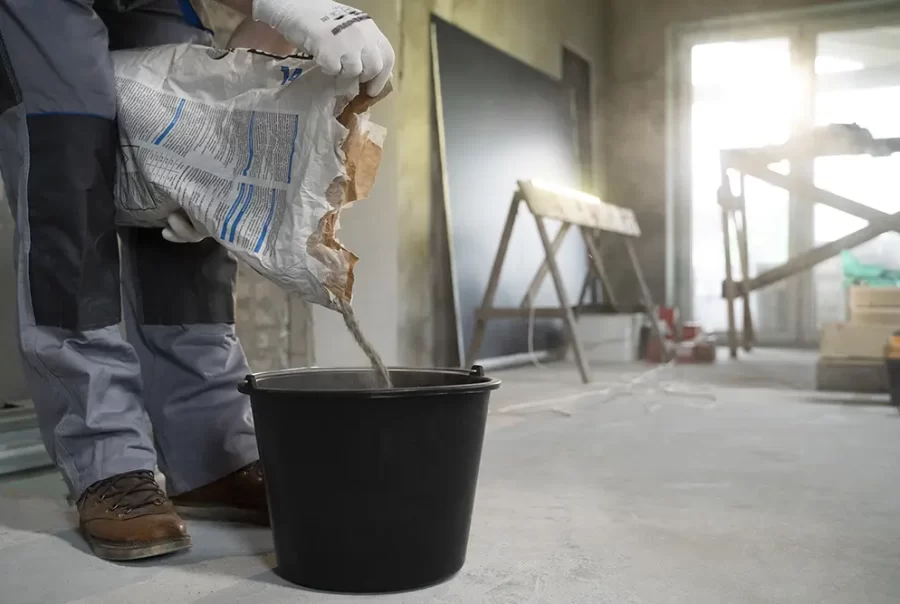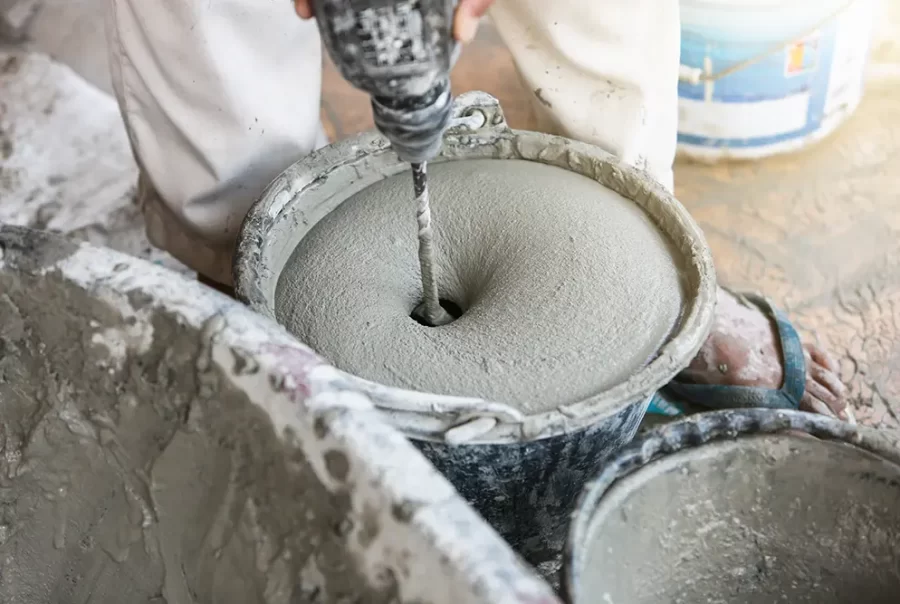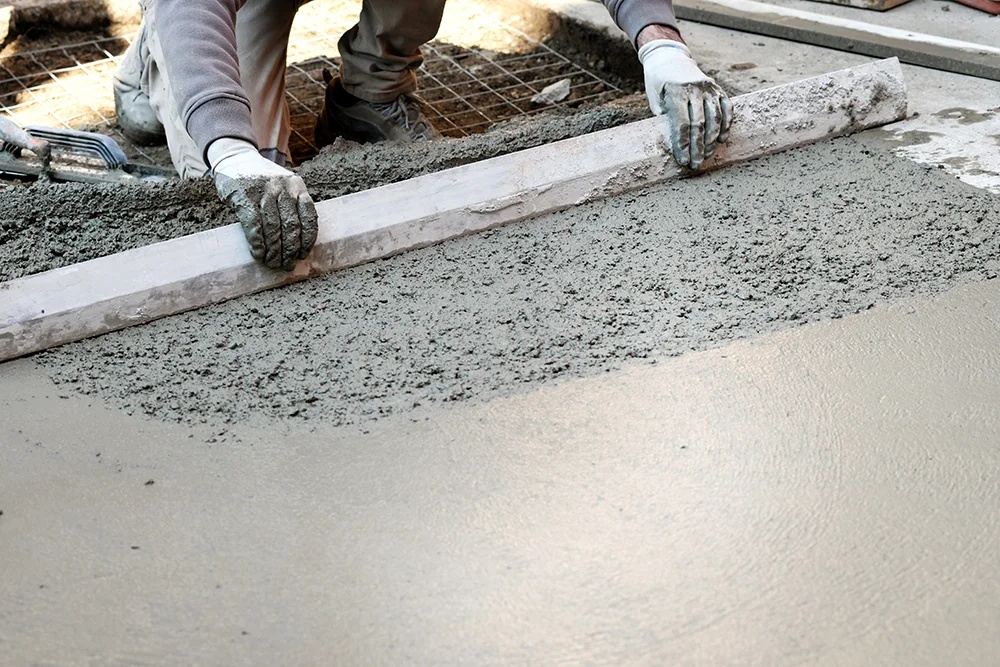It does not matter whether you are pouring a foundation, extending a house, building a garage, or creating monolithic pathways on the site. In all these cases, you will be dealing with concrete.
How long does concrete take to cure? Learn about this before preparing the site and the mix, and planning the next steps.
What Does Concrete Curing Mean?
Concrete curing is the gradual transformation of a liquid mixture into a completely solid concrete slab. The duration of the procedure, that is, the concrete cure time, depends on several variables.
Drying differs significantly from curing, although inexperienced workers often confuse these terms. Here are the main differences:
- Drying – the evaporation of moisture from the slab, after which it can be used carefully.
- Curing – a natural process when moisture gradually dries out within the structure, and the mixture itself becomes increasingly stronger.
The critical difference is that in the first case, concrete strengthens over time, while in the second, it dries faster but has lower strength indicators. Is faster drying worth the compromise? It depends on the situation.
Standard Concrete Cure Time
How long for concrete to cure? If we exclude external factors, we get the following average deadlines:
- 24-48 hours – the mixture hardens in the form, which, by the way, can already be dismantled and the structure left to dry. You can also walk on the surface, although it is not recommended.
- 5-7 days – the structure becomes strong enough that passenger cars will not sink into the mixture. In other words, after a week, gentle use of, for example, a pathway can begin.
- 28-30 days – complete curing of the concrete. Now it is strong enough to withstand even commercial trucks, specialized equipment, or other significant loads.
However, to repeat, these calculations are based on laboratory studies. In real conditions, external factors will affect the curing speed.
Factors That Affect Concrete Curing Time
So, how long does concrete need to cure? As experience from foundation repair in Toronto shows, the calculations above may differ somewhat from the actual curing and drying time of concrete by natural methods. It all depends on:
- Temperature.
- Humidity Levels.
- Type of Cement Used.
- Size of the Slab.
- Water-to-Cement Ratio.
There is, of course, also the human factor, especially if you are doing this procedure for the first time. However, with QualityAgeBuilds services, this factor can be excluded. So mostly only external factors remain.
Temperature
How long does it take for concrete to cure? From 7 days, but for some reason pouring concrete in cold weather is not recommended, although it is basically possible. Do you know why?
Concrete cures and dries best at temperatures of 10-27°C. Below this range, the process slows down; above it, it accelerates but sometimes with unpleasant consequences such as cracking of the foundation, middle, or top layers. Although, again, this is not the only factor influencing the curing process.
Humidity Levels
How long does it take concrete to cure? It depends on weather conditions, more precisely, on the moisture in the air. The ideal indicator is a range of 40-60%. It is in such an environment that curing occurs naturally, so to speak.
Moisture remains in the concrete long enough for it to become stronger over time without losing its additional characteristics such as hardness and conditional elasticity (resistance to soil subsidence, etc.).
Type of Cement Used
How long does it take for cement to dry? It also depends on the material you use. You should check the offers of various manufacturers and choose the cement suitable for use in your specific conditions.
Also, pay attention to the characteristics and recommendations for mixing. This way, you will get an idea not only about the parameters of the future concrete but also about the time of its setting and curing.

Size of the Slab
The larger the area you pour at once, the longer the drying time of the mixture. The same applies to the thickness of the structure, its depth in the ground, soil characteristics, and so on.
The bigger and more voluminous the poured forms, the longer the cement dries and hardens.
Water-to-Cement Ratio
The classic ratio of concrete to water is 0.5 parts. However, depending on external factors and cementing conditions, it can change. You can try to calculate non-standard parameters yourself, but it is better to entrust this task to professionals, especially if you still do not distinguish between drying and curing processes.
Concrete Curing vs. Drying: Key Differences
Drying is the hardening of concrete by about 80%. That is, the formation of a dense monolithic mass partially suitable for use with some load. It usually lasts 7-14 days, depending on the mixture content, weather conditions, and plans for the concrete.
Curing is 100% drying of concrete under natural conditions. This is a process lasting 28-30 days, as a result of which the mixture becomes maximally hard and reliable due to the gradual setting of the smallest cement particles.
Since achieving the maximum parameter of harder materials takes time, you will probably want to somewhat shorten the curing period. And we are here exactly to help you with that.
Tips to Reduce Concrete Drying Time
In dealing with foundation problems or forming new constructions such as pedestrian or vehicle pathways, you will be concerned about the timing of putting the freshly poured element into operation. That is, from the maximum 28-30 days, you will want to get a somewhat faster result. And this is possible, but with a number of nuances.
Artificial acceleration of curing is not a recommended method and requires additional preparation and skills. The main points to pay attention to are:
- Use Fast-Setting Concrete Mixes.
- Improve Airflow.
- Control the Temperature.
- Reduce Humidity.
- Follow the Proper Water-to-Cement Ratio.
However, we repeat, acceleration should happen in a controlled manner, so QualityAgeBuild specialists will definitely be useful on the project. You will understand why further on.
Use Fast-Setting Concrete Mixes
Specialized mixes with higher curing rates require proper preparation and care during drying. This concerns not only the water-to-cement ratio but also the periodic inspection of the concrete’s conditions with further operations to ensure its proper curing.
Improve Airflow
How long for concrete to dry? 1-28 days, depending on specific needs. To speed up this process, it is important to ensure proper ventilation of the mixture in the formwork. Even in natural conditions, you should take care of special drainage systems and insulators that will direct airflow to areas with the highest moisture levels.
Control the Temperature
And although controlling temperature outdoors may become a challenging task, there are still ways to maintain optimal temperatures of 10-27°C. This includes zoning the concrete layers and using special insulating pads. Moreover, you can pour the structure in segments, pre-drying the base layers.
Reduce Humidity
With moisture, everything is similar to the previous recommendations. Use moisture barriers, special pads, and materials with water-repellent properties. However, it is important to understand that moisture from the concrete also needs to evaporate, so additional openings, drainage, and other means will be useful.
Follow the Proper Water-to-Cement Ratio
How long does concrete take to fully cure? This will also depend on the amount of water you add to the mix. There are different types of concrete, but the recommendations for the cement/water ratio remain within 0.5 parts. Every bag of dry concrete contains proportions, so follow them to reduce the drying and curing time of the mixture.

Trust Us With Your Concrete Needs
You can try to fix foundation cracks on your own, pour new concrete, for example, for a driveway. But are you sure you will do this properly and with results you will be satisfied with for years?
If you doubt it or want guarantees that the structure will last for decades – entrust the concrete work to the professionals at QualityAgeBuild.
Over a decade of experience, hundreds of positive client reviews, a partner base with material prices lower than the market average. Still think laying concrete with a neighbor is cheaper and more reliable?

Conclusion
Concrete dry time varies from 24-48 hours for partial hardening to 7-28 days to reach its maximum strength and reliability. The choice of mixture, moisture calculations, building of frameworks and molds for pouring concrete – and this is only the basics, besides which there are plenty of procedures and equipment that you will need in your work.
Entrust the project to the specialists at QualityAgeBuild and get a lasting result with minimal investment!
Contact us
Quality Age Build Inc is at your service across the GTA. Request a quote today and ensure your property is in expert hands.
Related Services
Pair our expert guidance with our foundation services to establish a solid base for your build, ensuring durability and peace of mind.
FAQs
How does the thickness of the concrete affect drying time?
Directly proportional, since thin slabs dry and harden significantly faster. Therefore, the waiting time before putting the structure or element into operation is reduced.
What are the risks of using concrete before it’s fully dry?
If you do not give enough time for concrete to cure – you will face risks of its deformation in the future, which is critical for foundations and other similar structures.
How can you tell if concrete is completely dry and ready for use?
It is necessary to conduct strength tests using different techniques, which are included in the range of services provided by Quality Age Build.

